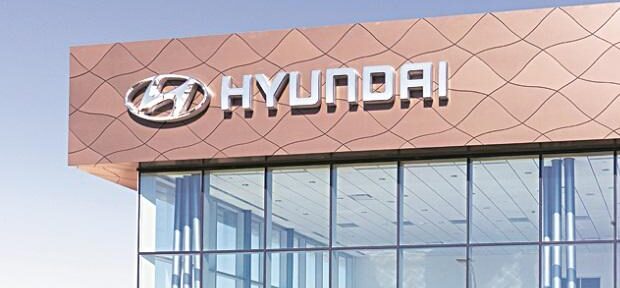Located approximately 40 kilometres southwest of Chennai, the capital city of Tamil Nadu, Sriperumbudur boasts a harmonious blend of rural charm, industrial vibrancy, and metropolitan influence.
The area houses manufacturing facilities for major companies such as iPhone maker Foxconn, Samsung, Royal Enfield, Dell, Mitsubishi, and Nissan, among others.
In this zone, Hyundai Motor India is in the process of converting its global passenger vehicle production hub into an advanced manufacturing unit, integrating artificial intelligence (AI), machine learning (ML), and virtual reality (VR) technologies.
Based on internal estimates, the adoption of Industry 4.0, Industrial Internet of Things (IIoT), and AI in the unit resulted in bringing down the maintenance time by 5 per cent, complete quality traceability of critical parts, and improvement of process quality by 1 per cent.
The plant, one of the first units by any industrial player in Sriperumbudur, is set to see an investment of Rs 26,000 crore as it enters the 26th year of its operation.
It is from here that models like the Grand i10 Nios, i20, Aura, Exter, Venue, Verna, Creta, Alcazar, Tucson, Kona, and Ioniq are built.
Technology makeover
‘Smart employees power the smart factory!’
This tagline on a poster inside the plant serves as an invitation to explore the plant’s interior, offering a glimpse into the ongoing technological revolution. “We are ushering in automation across areas traditionally deemed dirty, dull, difficult, and dangerous,” remarks Gopala Krishnan C S, chief manufacturing officer at Hyundai Motor India.
According to Krishnan, the unit’s technology makeover began in 2019 with the integration of seven shops, connecting over 2,000 critical equipment and over 1,000 intelligent sensors on the shop floor.
This initiative led to a significant improvement in downtime management. Moreover, data from these smart sensors can predict abnormalities in rotating and other critical equipment, resulting in a 5 per cent reduction in maintenance downtime.
“We have a dedicated IoT team that leverages a substantial amount of data. These engineers analyse the data points to identify patterns, allowing us to proactively pinpoint potential issues and greatly reduce downtime in the future,” he adds.
This digitally connected shop generates 12 billion data points per year. The company is leveraging this data with AI and ML technology to make data-driven decision-making. A separate team of more than 80 data scientists is working day and night to assess this data.
In various divisions of the plant, such as the assembly shop, body shop, press shop, or end-of-the-line, AI and computer vision technologies play a significant role.
Let’s consider the assembly shop, where all engine, suspension, electrical, and underbody parts are fitted into the car. Complete testing of the cars is conducted in the assembly shop, with AI-powered vision aiding in achieving zero defects.
“Earlier, the operator had to remember all 450 variants and hence it was time-consuming and had chances of error too. Now he has to just scan. That itself is digital,” he adds.
In the body shop too, where full-body shells are built from panels, automated robotic arms are used for intricate welding operations that ensure superior and consistent build quality. Here also, deep learning vision system is used to improve the process quality.
In the press shop, one could see AI-based panel crack detection to identify the panel crack early during the pressing process. This computer-controlled line converts sheet metal into body panels with high dimensional accuracy and consistency. Engine shops, where engines are made, also use AI-based vision to identify the surface defects in the machining line ensuring 100 per cent field quality.
While moving through the plant, one could see a VR zone. Here, staff were being trained to do their respective works virtually using VR-based immersive technology, to ensure that before getting into the floor, they get a hang of the nature of their jobs.
“We have a high-speed vision system. All machine lines are monitored with the in-line digital monitoring system. In maintenance, we have robot predictive maintenance to Identify failures upfront. The supply chain also we have got an automatic mobile robot in logistics,” adds Krishnan.
At the end of the line too, deep learning techniques are used to analyse the testing parameters to improve the machine throughput.
Well, the story is not over here.
The company has deployed an AI solution using deep learning image analytics in safety for human entry prevention in auto zones in body and assembly shops.
In the supply chain too, it has successfully implemented solutions to optimize outbound truck routes and freight structures, achieving substantial cost savings.
The company is also looking to analyse inventory levels and reorder points using AI, ensuring optimal stocks are maintained to meet market demand.
On the way out of the factory, employees showed the latest tech entry to the plant, a collaborative robot (cobot) that is one of the most advanced technologies for product assessment at this smart manufacturing site. Well, the future AI plans also include demand forecasting using historic data, and more predictive maintenance, among others.
To take the technology further ahead, a tie-up with the World Economic Forum is also being planned.
“Tamil Nadu is a key state for implementing all these technologies. The government is supporting and has an innovation laboratory (lab). The World Economic Forum is also going to make an advanced manufacturing hub in Tamil Nadu for advanced manufacturing and sustainability practices. That lab will support Tamil Nadu and other states as well. We will be partnering that centre as well,” he adds.
The next on their bucket list of technologies are generative AI, digital twin and robotic process automation. In terms of sustainability, the plant is already depending on renewable energy as a source of 63 per cent of its power requirement and has set a target of achieving 100 per cent by next year.
As one moves out of the unit, the Hyundai slogan comes to mind: ‘New Thinking, New Possibilities’. Indeed, through new thinking, Hyundai is moving closer to becoming a lighthouse factory in the next few years.
